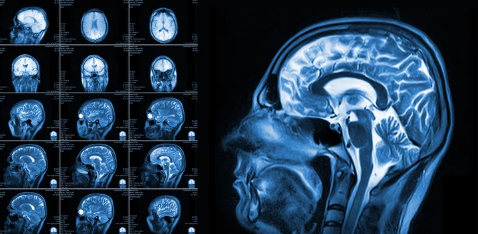Superconducting magnets have quietly transformed the modern world. In medicine, they power Magnetic Resonance Imaging (MRI) machines, giving doctors the ability to see inside the human body with remarkable precision. In energy research, they lie at the heart of nuclear fusion reactors, devices designed to replicate the process that powers the stars.
At first glance, these two fields couldn’t be more different: one saves lives in hospitals, the other aims to save the planet by providing limitless, carbon-free power. Yet both depend on the same foundation—superconducting magnets capable of generating extremely strong, stable magnetic fields. This shared reliance is opening the door to cross-disciplinary breakthroughs, bringing healthcare and clean energy closer together than ever before.
What Are Superconducting Magnets?
Superconducting magnets are coils made from special materials that, when cooled to cryogenic temperatures, conduct electricity without resistance. This allows them to generate enormous magnetic fields with high efficiency and stability.
Key Features:
- Zero electrical resistance at cryogenic temperatures.
- Extremely high field strength, often several Tesla (far stronger than Earth’s magnetic field).
- Energy efficiency, as no power is lost to heat within the superconducting coils.
These properties make superconductors indispensable in both MRI machines and fusion reactors.
Superconducting Magnets in MRI
How They Work in Medical Imaging
MRI scanners use superconducting magnets to align hydrogen protons in the human body. When exposed to radiofrequency pulses, the protons emit signals that can be converted into detailed images of organs, tissues, and even brain activity.
- Most clinical MRI machines operate at 1.5 to 3 Tesla, while research models can reach 7 Tesla or more.
- Uniform, stable fields are essential for accurate imaging.
- Cryogenic systems keep magnets cooled with liquid helium or advanced alternatives.
Without superconductors, MRI would not be possible, as conventional magnets cannot provide the required strength or stability.
Superconducting Magnets in Fusion Reactors
The Challenge of Containing Plasma
Fusion reactors aim to confine plasma—a superheated, electrically charged gas exceeding 100 million degrees Celsius—without it touching the reactor walls. The only viable method is magnetic confinement, which requires fields even stronger and more complex than those used in MRI.
- Large fusion devices like tokamaks and stellarators use superconducting magnets to create magnetic “cages.”
- These magnets can reach 20 Tesla or more, pushing the limits of superconducting technology.
- Reliability and efficiency are critical, as fusion reactors must operate continuously for extended periods.
Superconductors make fusion not just possible, but potentially scalable, by reducing power demands and improving confinement stability.Shared Advances: MRI and Fusion Driving Each Other Forward
High-Temperature Superconductors (HTS)
Traditionally, superconductors needed to be cooled with liquid helium to extremely low temperatures. The development of high-temperature superconductors (HTS), which work at warmer (though still cryogenic) conditions, is revolutionizing both MRI and fusion.
- In MRI: HTS magnets reduce costs, size, and energy requirements, enabling more compact machines for hospitals.
- In Fusion: HTS allows for smaller, stronger magnets, opening the possibility of compact fusion reactors instead of massive installations like ITER.
Cryogenic Engineering
Both fields have invested heavily in cryogenic systems that keep magnets cold and stable. Innovations in MRI cooling methods—such as helium recycling—are now being adapted to reduce the enormous cooling needs of fusion reactors.
Precision and Control
MRI requires absolute magnetic uniformity for clear images. Fusion requires magnetic precision to avoid plasma instabilities. Techniques developed for MRI field calibration are being adapted to monitor and control plasma in real time.
Case Studies: Where the Worlds Overlap
ITER – The Flagship Fusion Project
The ITER reactor in France is the largest fusion experiment in history, relying on massive superconducting magnets weighing hundreds of tons. Many of its design principles, especially in cryogenic cooling and stability, trace their origins back to MRI technology.
Commonwealth Fusion Systems (CFS)
This private company is building compact fusion reactors using HTS magnets, drawing inspiration from decades of superconducting innovation in MRI. Their goal is to demonstrate commercially viable fusion power within the next two decades.
Cross-Industry Expertise
Magnet engineers, cryogenic specialists, and material scientists often work across both industries. Knowledge gained in building medical devices is directly contributing to energy research, and vice versa.
The Future of Shared Superconducting Technology
A Healthcare and Energy Revolution
The continued development of superconducting magnets promises to reshape both medicine and energy:
- Next-gen MRI machines will be smaller, more affordable, and more powerful.
- Fusion reactors will become more compact, efficient, and cost-effective, accelerating the transition to clean energy.
Global Implications
If fusion becomes commercially viable, powered by superconducting magnets, it could deliver virtually limitless carbon-free electricity. At the same time, superconducting advances will make MRI more accessible worldwide, improving healthcare equity.
Conclusion: One Technology, Two Transformations
Superconducting magnets embody the beauty of shared science. The same technology that helps doctors diagnose disease is also helping scientists attempt to contain a miniature star on Earth.
In MRI, superconductors have transformed medical imaging. In fusion, they could transform the future of global energy. Together, these fields show that breakthroughs in one area of science often ripple across disciplines, leading to innovations that benefit humanity as a whole.
The future of superconducting magnets is not just about healthcare or energy—it is about building a shared future where science heals bodies and powers civilizations alike.
Also Read :
